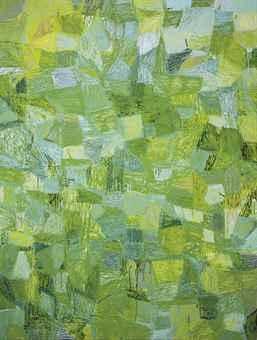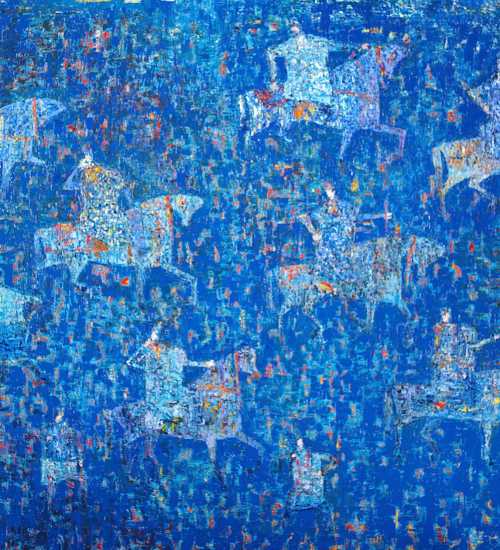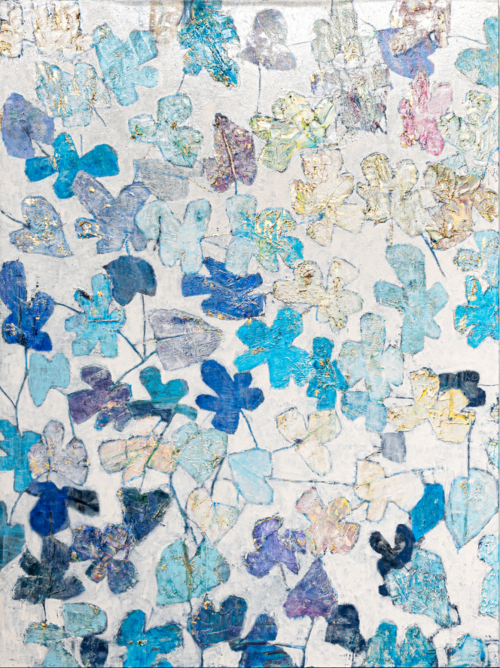- Sensibility Green Summer Serenades 2011
- Oil and wax on canvas
- Painting
- 182 * 242 cm
- signed, dated and titled '"SENSIBILITY GREEN" summer serenades REZA DERAKSHANI 2011' and signed twice in Farsi (on the reverse)
Artwork Description
Art has always been the most personal means of self-expression through both my abstract and representational works. Whereas in abstraction formal investigation holds prominence, my figurative art leans towards telling the story.
My fascination with abstract art began in early 80s in the US. I was deeply influenced by the American abstract art movement and after an engagement with this personal way of visual expression, in retrospect I realized that partial abstraction was present in my representational work as well. It seems to be a natural instinct in its early stages, like a child expressing feelings, but then it can accumulate knowledge and understanding and become highly complex.
Merging the essence of my cultural heritage together with the multifaceted 20th century art, I tried to find my own language of non-representational works. The earlier works were derived from Persian miniatures and folk art, but in progress it moved to the non-objective state, that's where it bypassed my perceptions and stimulated the inner senses, where it became more lyrical.
Abstract art is an intellectual process and definitely a different language, which I believe is highly spiritual and sophisticated. One thing is clear, if you discover the language of abstraction it will drastically and permanently change your way of seeing representational art and it would be impossible to shift back to what you used to do.'
(Reza Derakshani, 2012 )
Derakshani insists on the freedom of expression, which has a significant role in the creation of his works. His paintings present a high sense of spontaneity, a strong intuition and an expression of vitality. Seen from this angle, Derakshani's work has neither the political slogans chanted by many contemporary Iranian artists today, nor social aims, nor do they carry any pretentiousness of objects or concepts. Hence, the viewer is left with a sensation of visual experience.
This leads to a naïve state of painting, unrelated to any formal structure. In the present lot, Sensibility Green Summer Serenades, it all starts with a simple line repeated endlessly in a staccato movement. Finer lines of different undertones intersect in various directions, creating a larger pattern that reminds us of the anatomy of a leaf.
Derakshani applies shades of greens and yellows on the canvas and superimposes them on one another, thus creating a vibrant imagery of freshness and vigor. The joyful and gleaming foliage, depicted in a spontaneous way, seems to replicate sacred codes of nature.
For Derakshani, the mysterious structure, the harmony and the rhythm found in nature are strong and are the real drive that inspire him. The present work is constructed with simple and fine lines, yet it leaves a lasting impression on the viewer.
My fascination with abstract art began in early 80s in the US. I was deeply influenced by the American abstract art movement and after an engagement with this personal way of visual expression, in retrospect I realized that partial abstraction was present in my representational work as well. It seems to be a natural instinct in its early stages, like a child expressing feelings, but then it can accumulate knowledge and understanding and become highly complex.
Merging the essence of my cultural heritage together with the multifaceted 20th century art, I tried to find my own language of non-representational works. The earlier works were derived from Persian miniatures and folk art, but in progress it moved to the non-objective state, that's where it bypassed my perceptions and stimulated the inner senses, where it became more lyrical.
Abstract art is an intellectual process and definitely a different language, which I believe is highly spiritual and sophisticated. One thing is clear, if you discover the language of abstraction it will drastically and permanently change your way of seeing representational art and it would be impossible to shift back to what you used to do.'
(Reza Derakshani, 2012 )
Derakshani insists on the freedom of expression, which has a significant role in the creation of his works. His paintings present a high sense of spontaneity, a strong intuition and an expression of vitality. Seen from this angle, Derakshani's work has neither the political slogans chanted by many contemporary Iranian artists today, nor social aims, nor do they carry any pretentiousness of objects or concepts. Hence, the viewer is left with a sensation of visual experience.
This leads to a naïve state of painting, unrelated to any formal structure. In the present lot, Sensibility Green Summer Serenades, it all starts with a simple line repeated endlessly in a staccato movement. Finer lines of different undertones intersect in various directions, creating a larger pattern that reminds us of the anatomy of a leaf.
Derakshani applies shades of greens and yellows on the canvas and superimposes them on one another, thus creating a vibrant imagery of freshness and vigor. The joyful and gleaming foliage, depicted in a spontaneous way, seems to replicate sacred codes of nature.
For Derakshani, the mysterious structure, the harmony and the rhythm found in nature are strong and are the real drive that inspire him. The present work is constructed with simple and fine lines, yet it leaves a lasting impression on the viewer.
Realized Price
58,018 USD
Min Estimate
39,013 USD
Max Estimate
54,258 USD
Average Artwork Worth
+34.311%
Average Growth of Artwork Worth
Sales Performance Against Estimates
Average & Median Sold Lot Value
2021 - 2025
Performance vs. Estimate
2021 - 2025
Sell-through Rate
2021 - 2025
Similar Artworks
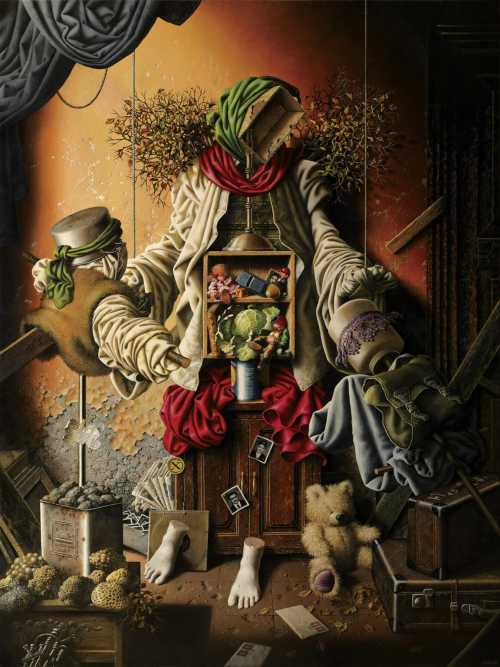
Forgiveness
Estimation
60,000,000,000﷼
70,588 USD
-
70,000,000,000﷼
82,353 USD
Realized Price
103,400,000,000﷼
121,647 USD
59.077%
Sale Date
Tehran
-
14 February 2025

Too Young to Go Steady
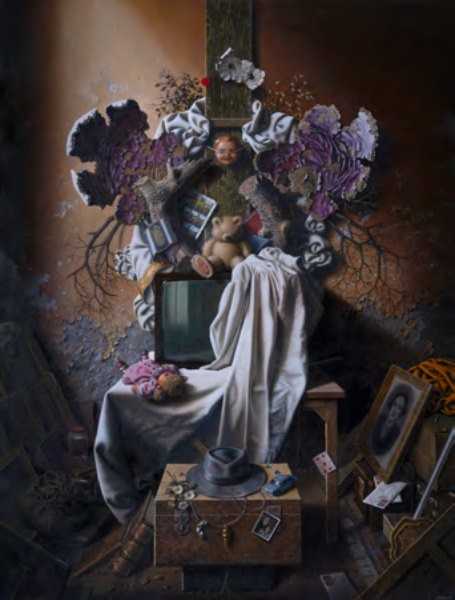
The Eighth Day of the Creation
Estimation
30,000,000,000﷼
60,000 USD
-
40,000,000,000﷼
80,000 USD
Realized Price
46,000,000,000﷼
92,000 USD
31.429%
Sale Date
Tehran
-
18 July 2023
